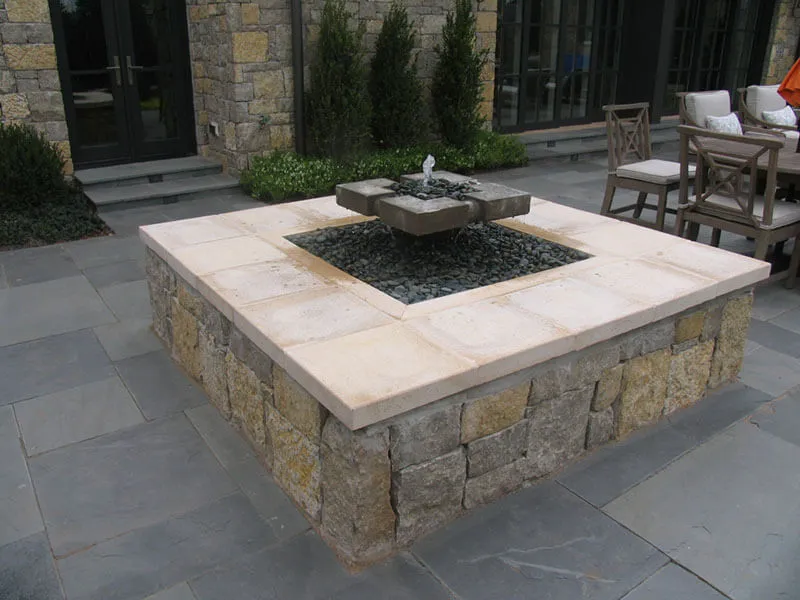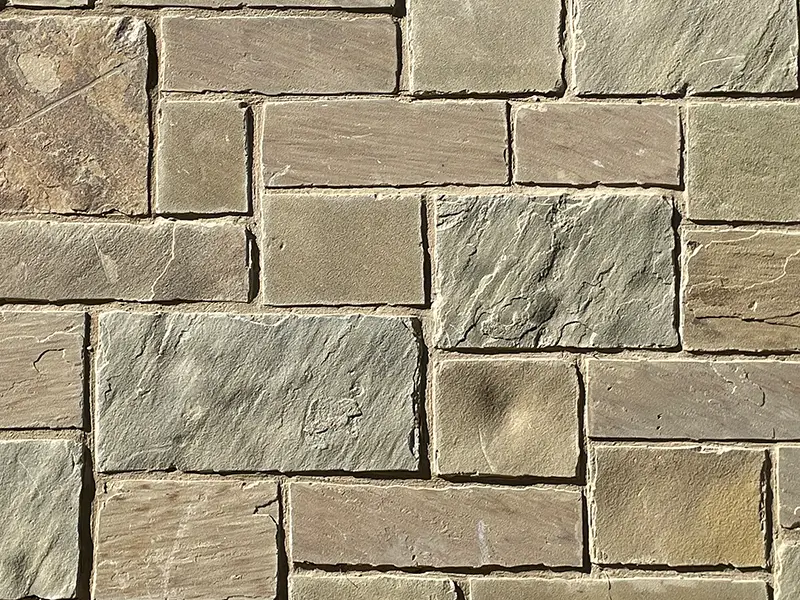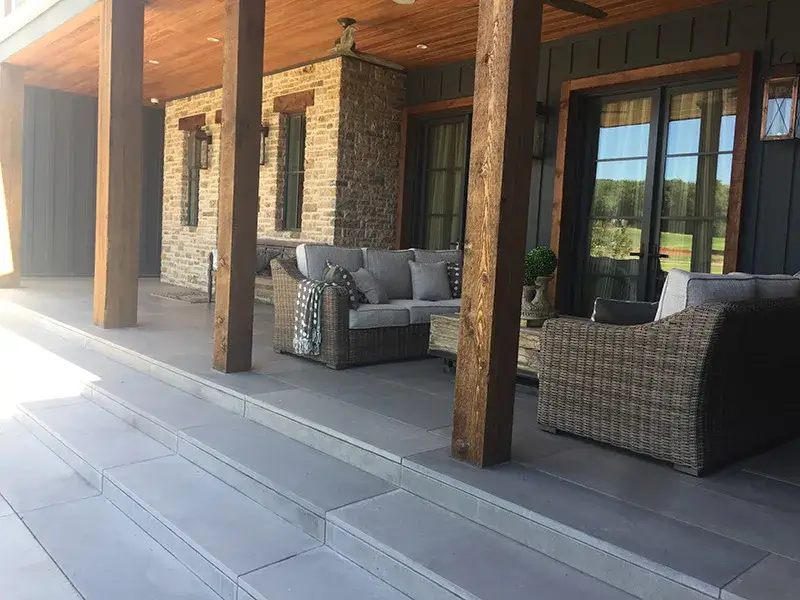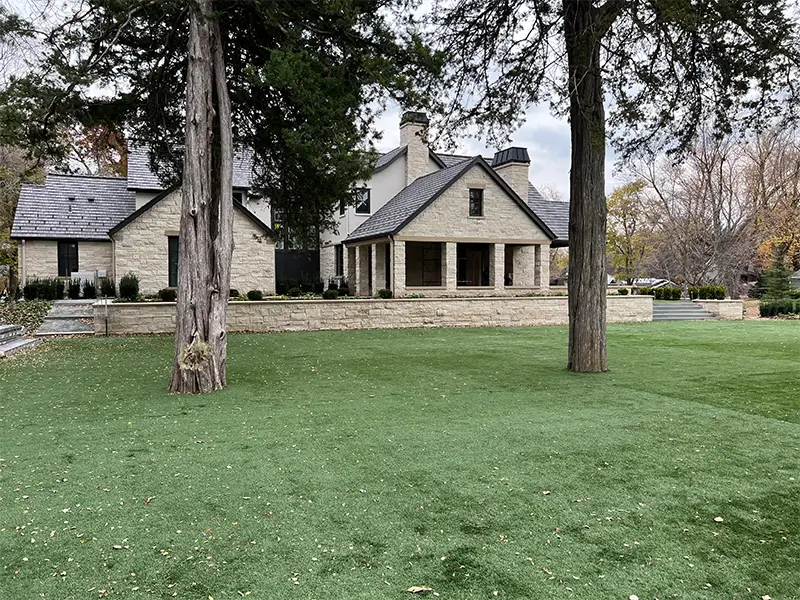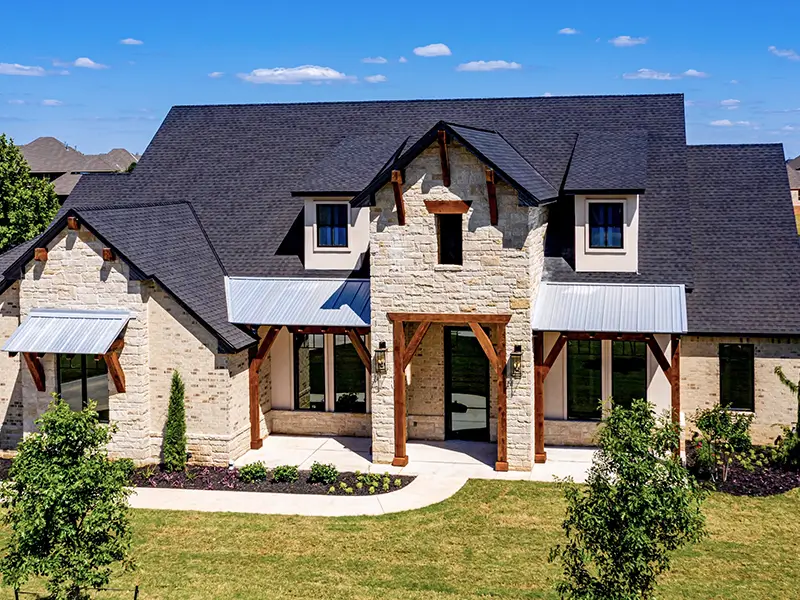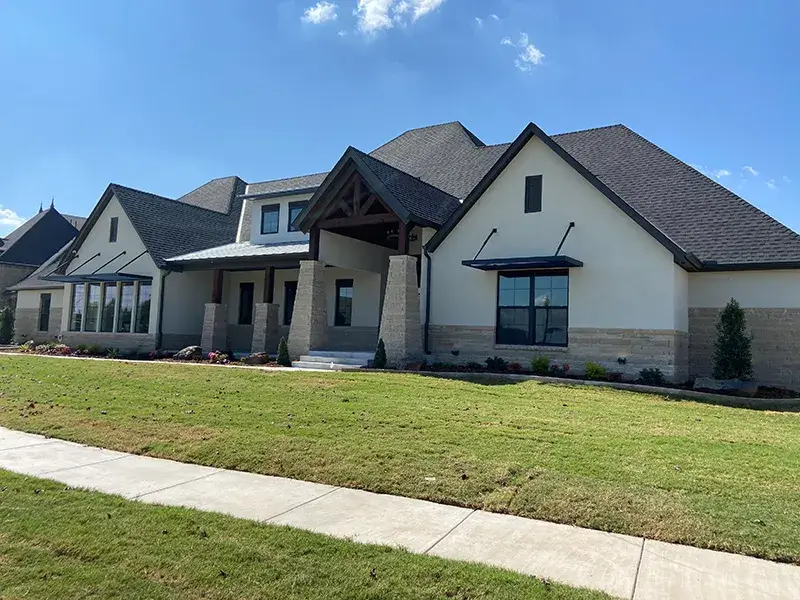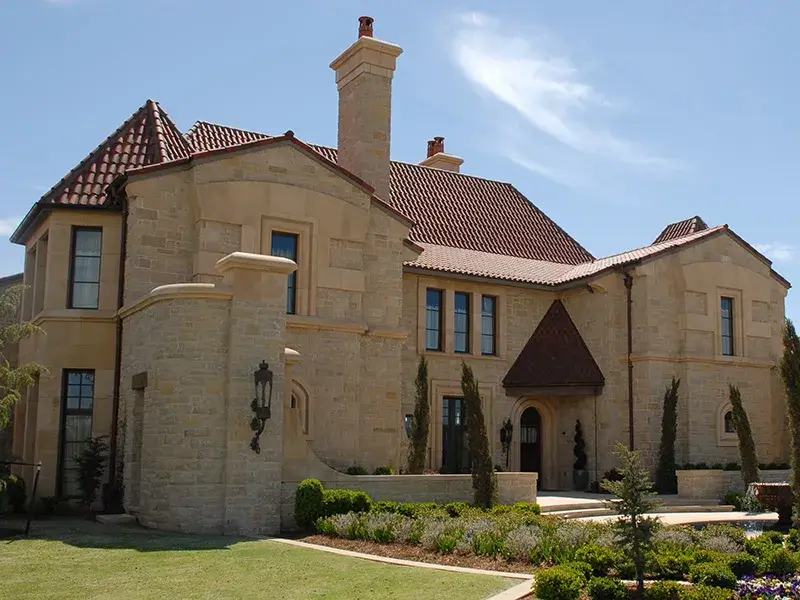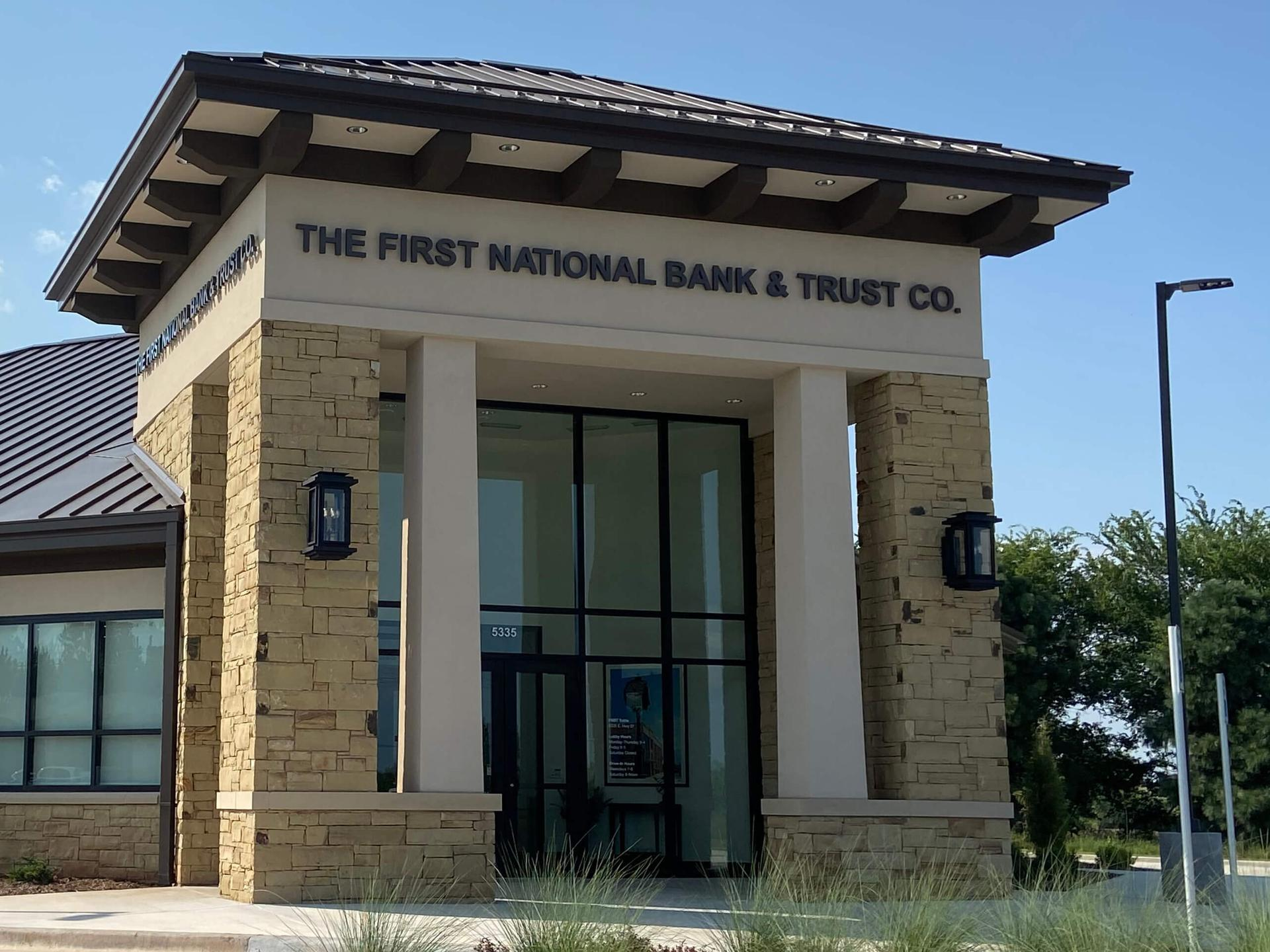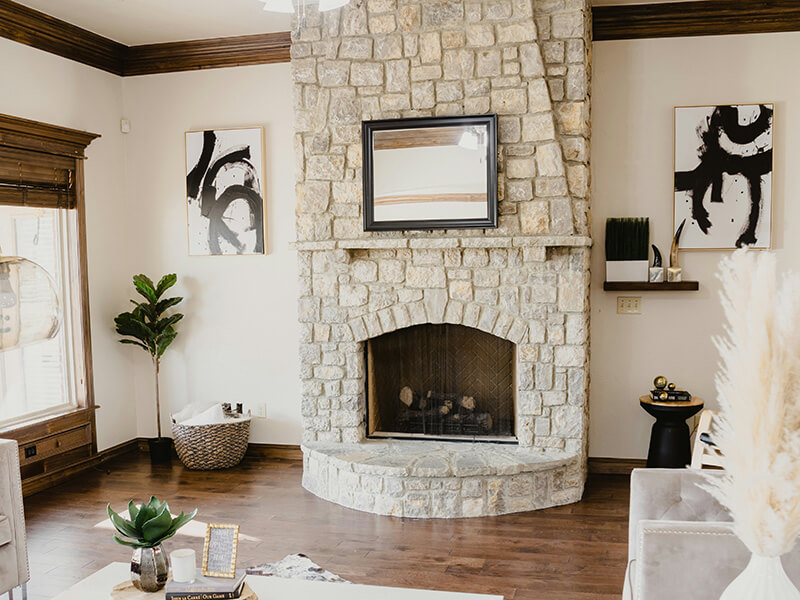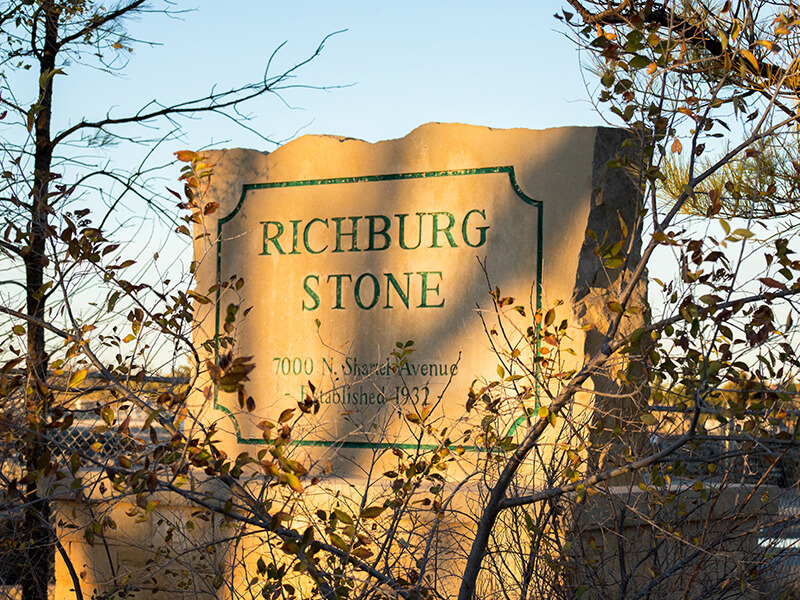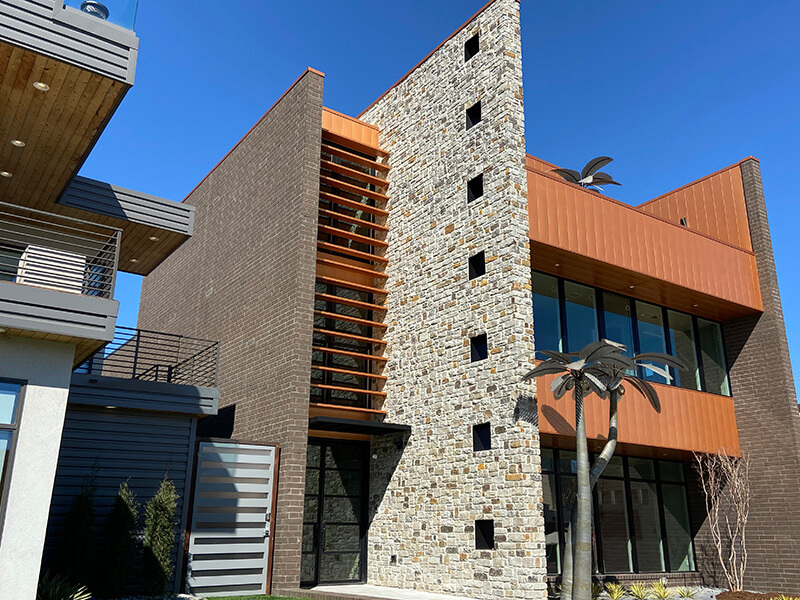Two building stones frequently used in construction are Oklahoma blue stone and slate. These Oklahoma stone OKC types have some similarities in appearance and in their uses, causing them to sometimes be confused as being the same stones. However, these are two separate stone types due to their individual properties and compositions, which cause each to have unique architectural and construction uses.
Despite their differences in appearance and their formation processes, bluestone and slate are similar in that they are both varieties of flagstone. As a whole, flagstone is a stone variety in which each rock has the characteristic ability to be split into thin layers. This unique characteristic makes it an ideal choice for a variety of projects.
Qualities of Oklahoma Blue Stone
Bluestone is a sedimentary rock and a popular flagstone. It is named for its unique blue-gray coloring, which also adds to its appeal. Bluestone is very strong due to its slow formation process, and its distinct grain enables it to be split smoothly into smaller flagstones. Once quarried, this stone can be cut into various sizes and shapes, frequently including large and thin slabs for paving stones.
How is Bluestone Used?
As a natural material, Oklahoma blue stone is a beautiful and durable choice for a variety of landscaping and construction projects. Its surface is hard, flat, and smooth, making it an excellent selection for walkways. Bluestone has a unique texture that adds to its longevity and makes it non-slippery, allowing it to be safe to walk on in rainy weather or when used for pool copings.
Qualities of Slate
Slate is a metamorphic rock and another useful type of flagstone. This Oklahoma stone OKC can be easily split into thin layers. This material forms when sediments are tightly compacted and exposed to high temperatures. It is available in many colors, frequently black, red, and brown, and sometimes blue, green, and buff. Slate is very fine-grained and smooth to the touch. However, it is also hard and brittle.
How is Slate Used?
This material forms in large and thin sheets of rock. Slate is fine-grained and has many uses due to its sturdiness and aesthetic appeal. It is a popular choice for roofing and floors. Unlike sedimentary flagstone types (including bluestone), slate may need to be sealed to add to its durability and help prevent stains. Exterior flooring made of this material can become slippery.
Selecting Which Flagstone to Use
While these two flagstones both form in thin sheets, their different compositions allow them to have distinct uses. However, both can be good paving stone choices because they can be smoothly cleaved into an even surface.
When to Use Bluestone
This beautiful material has been used for building, paving, and landscaping for centuries due to its durability and unique color. It is a popular choice for various projects, including patios, driveways, pool copings, pathways, and facades. Bluestone has high levels of uniformity and is easily shaped, making it an excellent structural stone material choice.
When to Use Slate
Because it can be cut very thinly, slate is most often used as roofing shingles and as floor tiles. It is also used on stairs, walkways, and for wall cladding. When selecting an exterior paving material, keep in mind that slate can become slippery.
Sourcing Oklahoma Stone OKC
Although these two materials have many similarities, bluestone’s non-slippery surface and unique aesthetic appeal often make it the better choice for various projects. At Richburg Stone, we have a wide variety of high-quality materials for any building project, including bluestone. Contact us or visit our showroom to learn more.

